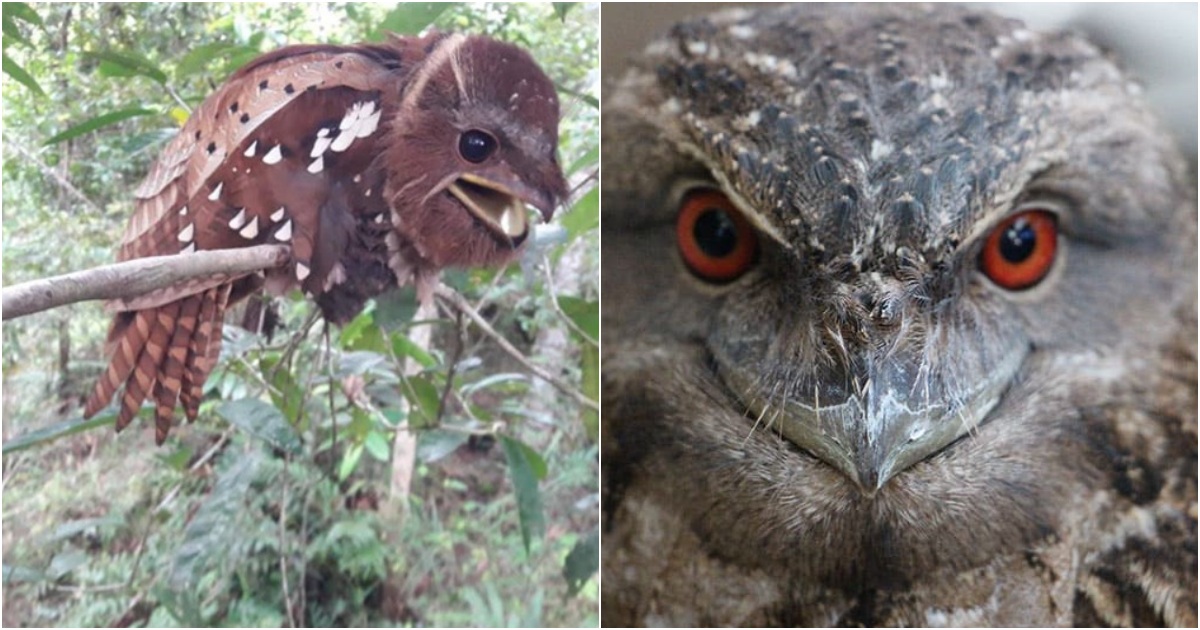The Bizarre Southeast Asian Bird: Sporting an Eerie “Face” That Can Startle You When Encountered at Night

Southeast Asia is home to thousands of bird species, each with its unique shapes and sizes.

One peculiar avian creature stands out—the frog-faced bird. Despite being a bird, it possesses a beak that resembles the mouth of a frog. Evolution has sculpted it into a distinctive form. Its fluffy feathers allow it to blend seamlessly with its habitat, concealing itself among trees and amidst dry leaves.
This bird is indigenous to Malaysia, Thailand, Indonesia, and Brunei, and its scientific name is Batrachostomus Auritus.
Some netizens in Malaysia even claim that it bears a resemblance to a human face. If they were to encounter it at night, they would surely be taken aback, filled with fear.
Thanks to its fluffy plumage, this large frog-faced bird can remain elusive in tropical forests. It can camouflage itself to resemble tree bark or dried leaves. It hides during the day and hunts for prey at night, primarily feeding on insects found on the ground.
According to the International Union for Conservation of Nature (IUCN), scientists have not yet determined the global population of frog-faced birds. Therefore, this species is becoming increasingly rare in the Southeast Asian region. In Thailand, it is classified as “extremely rare.”
The IUCN states, “The frog-faced bird is a naturally elusive and little-known species, but this does not mean they are not protected.”
Taman Negara National Park and Gunung Mulu, as well as the Danum Valley Conservation Area in Malaysia, have implemented programs aimed at protecting this rare bird species.

It’s regrettable that human actions have disrupted the natural habitat of the frog-faced bird, making it vulnerable. However, through dedicated conservation efforts, there is hope for the survival and proliferation of this unique and captivating bird species.







